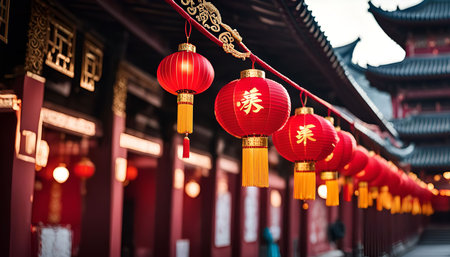Bridging Heritage: The Heart of British Traditions
In the gentle rhythm of British life, tradition weaves itself into the everyday in subtle yet profound ways. Picture a sunlit afternoon: porcelain teacups clink softly as families gather for tea, the fragrance of Earl Grey mingling with laughter and quiet reflection. This cherished ritual is more than refreshment—it’s a sacred pause, an invitation to connect and savour the moment. Beyond the parlour, the home garden stands as another cornerstone of British heritage. Roses climb weathered brick walls, lavender hums with bees, and each plot tells a story of care passed down through generations. These cultural anchors—afternoon tea, flourishing gardens, and the artful arrangement of interiors—infuse homes with a sense of continuity and belonging. They shape not just physical spaces, but also the emotional landscape of daily life. As we explore how these traditions harmonise with authentic Feng Shui practices, imagine the spirit of British living as an ever-present guide: grounding, gracious, and open to transformation.
Welcoming the Energy: What is Feng Shui?
In the heart of every British home, from the red-bricked terraces of Manchester to the honeyed stone cottages of the Cotswolds, there lies a unique rhythm—a gentle pulse woven through generations. Introducing authentic Feng Shui into this tapestry means more than just moving furniture; it’s about inviting the mystical flow of Chi, or life energy, to dance in harmony with our cherished traditions. At its core, Feng Shui is an ancient Chinese practice that seeks to balance energies within a space, fostering well-being, prosperity, and peace. Imagine stepping through your front door and sensing not just warmth from a crackling fire, but also an invisible embrace—a subtle vitality that lifts the spirit and soothes the mind.
Chi moves like a river through our homes, enlivening rooms and corners with either vibrant movement or tranquil stillness. The art of authentic Feng Shui asks us to observe: Where does light linger in your kitchen at dawn? Which hallway seems to collect forgotten shoes or yesterday’s post? These seemingly ordinary details are clues—opportunities to direct energy in ways that support daily life while honouring British sensibilities. For example, where tradition places a boot rack by the entrance, Feng Shui might suggest a small plant nearby to freshen incoming Chi and soften the transition between public street and private sanctuary.
| Feng Shui Principle | British Home Application |
|---|---|
| Clear Pathways for Chi | Keep hallways free from clutter; display family wellies neatly |
| Balance Yin & Yang | Pair cosy nooks (yin) with open sitting rooms (yang) |
| Five Elements Harmony | Wooden beams (wood), brick fireplaces (fire), ceramic teapots (earth), metal candlesticks (metal), garden ponds (water) |
The foundational principles of Feng Shui—clear pathways for energy, balancing yin and yang, harmonising the five elements—merge beautifully with the rhythms of British living. Each home becomes a living story: a Victorian parlour glowing with soft lamplight beside a sunlit conservatory filled with potted ferns. By weaving these energies together thoughtfully, we create spaces that don’t just shelter us from the rain—they nurture our souls and celebrate our everyday rituals.
![]()
3. A Tale of Two Worlds: Where Traditions Intertwine
Step into the softly lit parlour of a Georgian townhouse, where centuries-old British rituals whisper through polished mahogany and delicate bone china. Here, amidst the gentle chime of a grandfather clock and the glow of a crackling fire, the ancient wisdom of Feng Shui finds its place beside English heritage. Imagine a London flat adorned with velvet cushions in auspicious hues, sun streaming through sash windows onto carefully positioned mirrors that draw in positive chi. The scent of Earl Grey lingers in the air as family portraits share wall space with hand-painted Chinese scrolls—each chosen to enhance harmony and storytelling alike.
These soulfully crafted spaces become living tales, blending the structured grace of British customs with the intuitive flow of Feng Shui. Afternoon tea is served not only for tradition, but also at an hour when energy peaks, nurturing both body and spirit. A well-loved Chesterfield sofa sits in the ‘command position,’ welcoming guests with warmth and intention. In this fusion, every element—be it a classic English rose or a jade plant on the sill—serves a dual purpose: honouring the past while inviting new blessings. This is more than décor; it is an alchemy of old-world charm and mindful placement, where history breathes alongside hope, and every room hums with renewed, harmonious purpose.
4. Finding Balance: Feng Shui for the British Home
Integrating Feng Shui into a quintessentially British home means honouring tradition while inviting new energy. The key is balance—respecting cherished customs and infusing spaces with principles that invite harmony, abundance, and well-being. Imagine a Victorian terrace warmed by the gentle glow of natural British light, or a country cottage where family heirlooms are thoughtfully placed to nurture both memory and luck.
Embracing Natural Light
In the UK, where the sun’s presence is treasured, making the most of natural light is an act of both practicality and spiritual wisdom. Position mirrors to reflect morning sunlight deeper into living areas, energising your space and uplifting spirits during overcast days. Avoid blocking windows with heavy curtains or furniture—let each room breathe in as much daylight as possible.
Honouring Family Heirlooms
British homes often tell stories through objects passed down generations. In Feng Shui, these items hold immense energy. Place inherited clocks, paintings, or teacups in positions of prominence—such as the living room or hallway—where their significance can nurture family unity and invite good fortune. Be mindful not to overcrowd; select meaningful pieces that truly resonate.
Practical Placement Guide
| British Tradition | Feng Shui Practice | Sensory Benefit |
|---|---|---|
| Antique armchair by the fireplace | Position facing main door for welcome energy (Qi) | Shelter & warmth upon arrival |
| Family photographs on mantelpiece | Display in living room’s “family” area (East sector) | Nurtures connection & togetherness |
| Cottage garden view | Keep window sills clear; add small jade plant for prosperity | Invites growth & vitality indoors |
| Pewter tea set on dining table | Use round tablecloth to promote harmony at meals | Smooths communication among guests |
Nurturing Luck and Well-being
Create gentle pathways between rooms by avoiding cluttered corridors; this allows positive energy to circulate freely, echoing British sensibility for orderliness. Use soft hues—sage green, dove grey—to foster tranquility. Fresh flowers from the local market in a classic vase bring life force (Qi) and seasonal joy into your home.
A Harmonious Ritual
Each morning, open windows briefly—even on brisk days—to refresh the atmosphere and welcome new opportunities. Light a beeswax candle at dusk to bridge tradition with mindful presence, setting intentions for peace and prosperity as night falls. This daily practice weaves together British heritage and authentic Feng Shui wisdom, nurturing a home where well-being and luck are always invited in.
5. Living Magic: Case Studies and Local Inspirations
Step into the heart of Britain, where rolling hills meet bustling city streets, and discover how real people are weaving together time-honoured British traditions with authentic Feng Shui wisdom. In a charming Cotswolds cottage, Sarah—a lifelong lover of English folklore—invited Feng Shui into her home by aligning her hearth with the Bagua map, ensuring the ancient energy flowed seamlessly alongside her treasured family heirlooms and wildflower arrangements. She recalls feeling an immediate shift: “It’s as if my grandmother’s spirit dances through the rooms now, and every sunrise feels like a blessing.”
Meanwhile in London’s vibrant Notting Hill, James transformed his Victorian terrace by balancing centuries-old brickwork with carefully chosen water features and reflective surfaces. Drawing inspiration from both Chinese philosophy and the British reverence for gardens, he created an indoor conservatory that harnesses natural light and invites harmony. James shares, “It’s not about abandoning what makes us British—it’s about elevating it. My home feels alive, modern, and deeply rooted all at once.”
Across Scotland’s rugged landscapes, Fiona blended the mystique of Celtic symbols with Feng Shui colour theory to revitalise her ancestral farmhouse. By pairing tartan patterns with auspicious reds and golds, she honours her heritage while inviting prosperity. The neighbours have noticed too—her home has become a gathering place for laughter and storytelling, echoing the old ways yet pulsing with fresh vitality.
These stories illustrate that living magic isn’t just theoretical; it is tangible and transformative. When Brits honour their roots while embracing the flow of Qi, they don’t lose their sense of self—they amplify it. Whether through whimsical teacup arrangements in a Sussex parlour or mindful garden paths winding through Yorkshire stone, these case studies show that blending traditions is a personal journey that brings out the best in both worlds.
Let their experiences inspire you to experiment fearlessly in your own space. The true enchantment lies not in imitation but in creating something unmistakably yours—where British charm meets Feng Shui flow, and every room tells a story uniquely written by you.
6. Embracing the Journey: A New Chapter in British Living
As we reach the close of our exploration into blending British traditions with authentic Feng Shui practices, a new chapter quietly opens—a gentle invitation to step beyond the familiar and embrace the subtle magic within your own home. Imagine the comforting ritual of afternoon tea enhanced by the harmonious flow of chi, or the stately calm of a Victorian sitting room now resonating with balanced elements and mindful intention. This is not about replacing cherished customs, but about deepening them—layering ancient wisdom upon the rich tapestry of British life.
Let your senses guide you as you reimagine every corner of your living space. The scent of English roses mingles with the grounding presence of wood; sunlight dances across antique china, illuminating spaces carefully curated for both beauty and energy. Listen for the whispers of history and intuition interwoven—every object, every colour, every placement holding a story that honours both heritage and spirit.
This soulful union invites you to slow down and notice—the way a favourite armchair feels when positioned just so, or how laughter seems to linger longer in rooms alive with harmony. It is here, between tradition and transformation, that true British living evolves. Open your heart to experimentation: rearrange, adjust, and attune until your home becomes a sanctuary where the old world gracefully meets the new.
So, dear reader, take this invitation to heart. Allow yourself to be enchanted by possibility. The journey is yours to shape—one thoughtful choice at a time. As you weave together timeless British customs with Feng Shui’s ancient guidance, you may discover not only a more balanced home but a renewed sense of belonging and wonder in daily life. Welcome this new chapter; let it unfold with curiosity and grace—and may your space reflect both your roots and your dreams.

